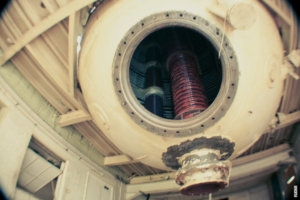Introduction
Milk, the incredibly versatile and nutritious beverage, is enjoyed by people all around the world. But have you ever wondered how this perishable liquid is preserved to maintain its freshness and extend its shelf life? In this article, we will take a closer look at the fascinating process of milk conservation.
The Science behind Milk Preservation
Preserving milk involves inhibiting the growth of bacteria and other microorganisms that cause spoilage. One of the most common preservation methods is through pasteurization. This process involves heating raw milk to a specific temperature for a set period of time to kill harmful bacteria.
Pasteurization: The Guardian of Milk
Pasteurization, discovered by Louis Pasteur in the 19th century, is a critical step in milk preservation. The process typically involves heating the milk to around 72 degrees Celsius (161.6 degrees Fahrenheit) for 15-20 seconds. This effectively eliminates harmful bacteria, such as Salmonella and E. coli, without significantly affecting the taste and nutritional value of the milk.
UHT: Ultra High Temperature, Ultra Long Shelf Life
Another method of milk preservation is Ultra High Temperature (UHT) treatment. In this process, milk is heated to a temperature above 135 degrees Celsius (275 degrees Fahrenheit) for a few seconds. This rapid heating kills all bacteria and spores in the milk, ensuring a longer shelf life of up to several months when unopened. UHT-treated milk can be stored without refrigeration until opened, making it a convenient choice for many consumers.
Evaporation: Concentrated Goodness
Milk can also be preserved through the process of evaporation. In this method, milk is heated under reduced pressure to remove a significant portion of its water content, resulting in a concentrated form of milk. This concentrated milk can be reconstituted by adding water when needed, making it a versatile option for various culinary applications.
Post
Post
Sealing the Freshness: Airtight Packaging
Preserving milk goes beyond the actual preservation processes. Packaging plays a crucial role in maintaining the freshness and quality of milk. Airtight containers, such as bottles and cartons, help prevent contamination from external sources and protect the milk from exposure to light and air, which can degrade its quality.
The Cold Chain: Keeping it Cool
Refrigeration is a vital aspect of milk preservation, particularly for pasteurized milk. Storing milk at temperatures below 4 degrees Celsius (39 degrees Fahrenheit) slows down the growth of bacteria and extends its shelf life. The cold chain, which encompasses the entire journey from production to consumption, ensures that milk is kept at the optimal temperature throughout.
Conclusion
Preserving milk is a complex and intricate process that involves science, technology, and careful packaging. Through pasteurization, UHT treatment, evaporation, and airtight packaging, milk can be enjoyed by consumers around the world while maintaining its freshness and nutritional value. So, the next time you pour yourself a glass of milk, take a moment to appreciate the fascinating journey it has undergone to reach your table.



